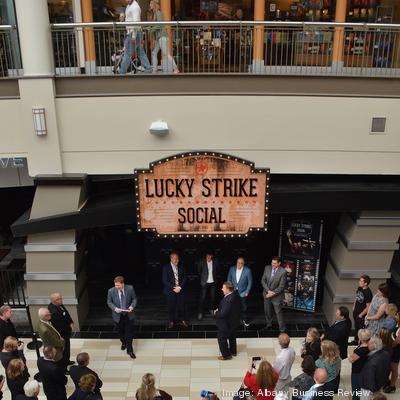

īeginning in the fall of 1944, Lucky Strike was also a sponsor of comedian Jack Benny's radio and TV show, The Jack Benny Program, which was also introduced as The Lucky Strike Program. "Luckies" were the cigarette of choice for the famous smoker Bette Davis, who smoked them until the final years of her life ( The New York Times noted the year of her death that she had switched them for Vantage filtered cigarettes). In 1937–38, American Tobacco paid $130,000 ($3.2 million in 2019 USD) to 16 Hollywood actors and actresses for their endorsement of Lucky Strike, the highest paid being Joan Crawford, Gary Cooper, Clark Gable, Myrna Loy, Robert Taylor, and Spencer Tracy who were each paid $10,000 (roughly $178,000 in 2019 USD).
#Lucky strike assembly series
American engaged in a series of advertisements using Hollywood actors as endorsers of Lucky Strike, including testimonials from Douglas Fairbanks, concerning the cigarette's flavor, often described as delicious due to the tobacco being toasted. The company's advertising campaigns generally featured a theme that stressed the quality of the tobacco purchased at auction for use in making Lucky Strike cigarettes and claimed that the higher quality tobacco resulted in a cigarette with better flavor. Īdvertising photo for Lucky Strike by Nickolas Muray, 1936

Before the ball had actually taken place, newspapers and magazines (encouraged in various ways by Bernays's office) had latched on to the idea that green was all the rage. Intellectuals were enlisted to give highbrow talks on the theme of green.

Manufacturers and retailers of clothing and accessories were advised of the excitement growing around the color green. Famous society women would attend wearing green dresses. The pretext for the ball and its unnamed underwriter was that proceeds would go to charity. The centerpiece of his efforts was the Green Ball, a social event at the Waldorf Astoria, hosted by Narcissa Cox Vanderlip. Bernays then endeavored to make green a fashionable color. When Bernays suggested changing the package to a neutral color, George Washington Hill, head of the American Tobacco Company, refused, saying that he had already spent millions advertising the package. In 1934, Edward Bernays was asked to deal with women's apparent reluctance to buy Lucky Strikes because their green and red package clashed with standard female fashions. The shows capitalized on the tobacco auction theme and each ended with the signature phrase "Sold, American". The weekly radio show's countdown catapulted the brand's success, remaining popular for 25 years. In 1935, ATC began to sponsor Your Hit Parade, featuring North Carolina tobacco auctioneer Lee Aubrey "Speed" Riggs (later, another tobacco auctioneer from Lexington, Kentucky, F.E. Rolfe and his Lucky Strike Orchestra" for Edison Records. Rolfe was performing on radio and recording as "B.A. By 1928, the bandleader and vaudeville producer B. Lucky Strike's association with radio music programs began during the 1920s on NBC. Lucky Strike factories in Durham, NC, pictured in 2014


 0 kommentar(er)
0 kommentar(er)
